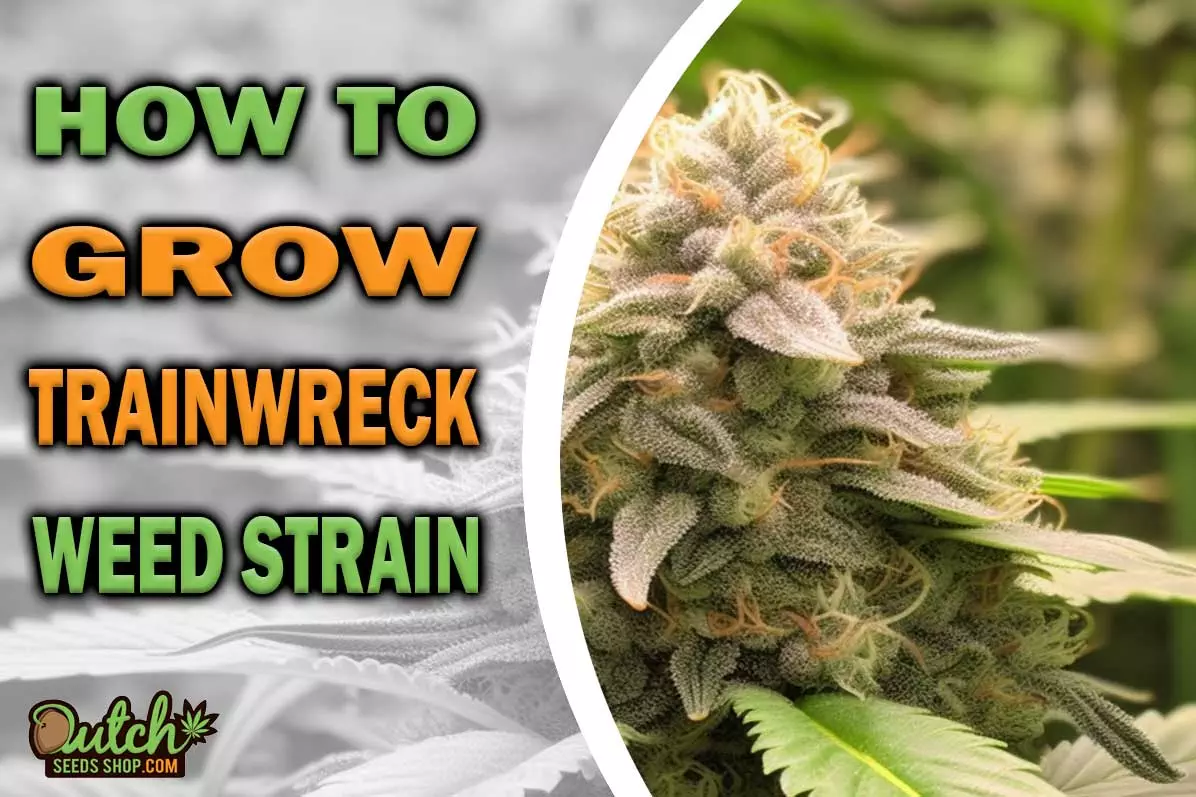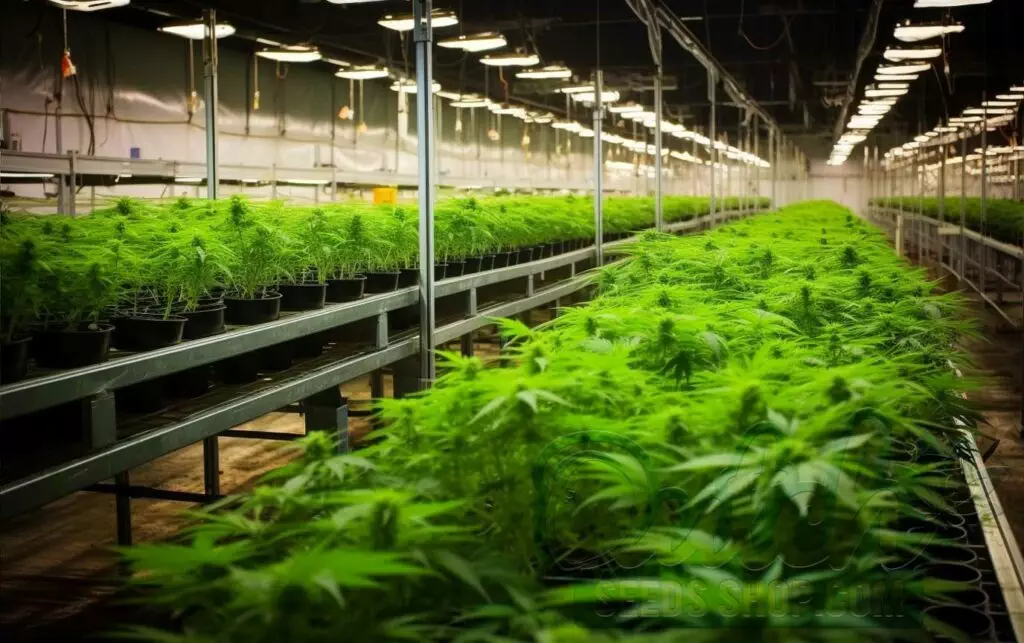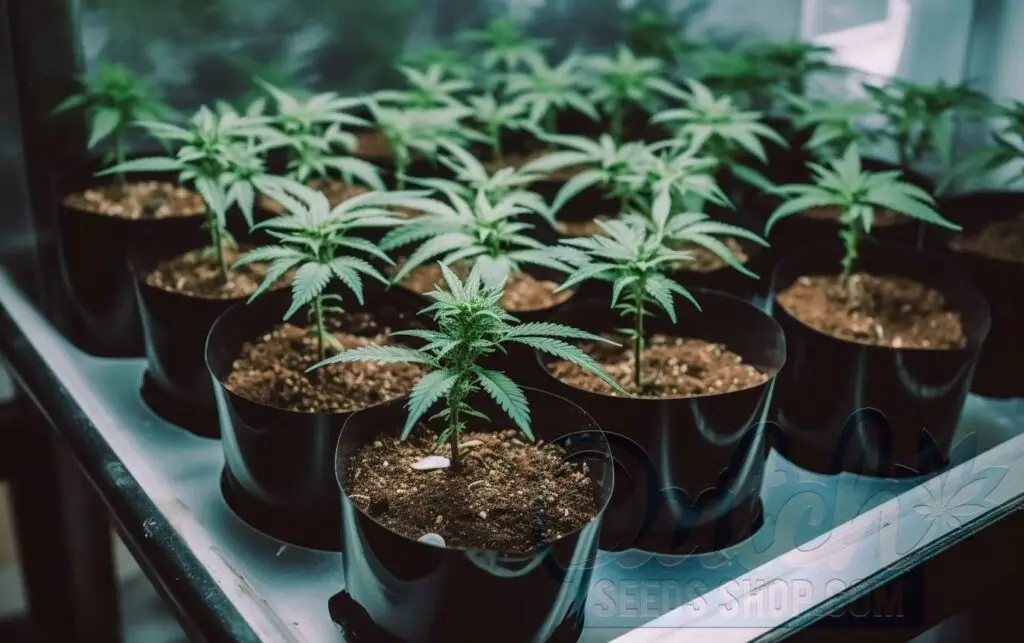How to Grow Trainwreck Strain
Boom! You want potent and fragrant cannabis? Let’s talk Trainwreck! This is the strain that’s been turning heads and fogging rooms with its aroma and effects. Whether you’re a seasoned cultivator or a green thumb looking for a new challenge, this guide will drop the knowledge you need to grow Trainwreck like a pro.

Get To Know Trainwreck Strain
Trainwreck is that bad boy in the cannabis world everyone wants to be friends with.
Originating from a mix of Mexican, Thai, and Afghani genetics, it leans 65% Sativa and 35% Indica.
It’s a heavy hitter with THC levels ranging from 18% to 25% and minimal CBD content, below 2%.
Loved for its citrus, earthy, and spicy flavors, Trainwreck gives you a burst of creativity, euphoria, and focus.
This isn’t just another cannabis strain; it’s practically a lifestyle.
Its towering heights and easy grow difficulty make it a go-to for both newbies and seasoned gardeners.
And hey, there are heaps of reviews, pictures, and videos to back up its cult-like following.
Tips and Tricks for Growing Trainwreck Successfully
To grow Trainwreck seeds, you’ve got to think like Trainwreck.
It’s an easy strain to grow but demands your full attention when it comes to growth stages, temperature, and humidity.
The flowering time ranges from 56 to 63 days.
Consider starting with seeds that have a solid reputation or go for clones if you’re in a hurry.
And don’t forget to accessorize!
You’ll need the basics like nutrient solutions and cultivation techniques to go from zero to hero.
Here are some quick tips:
- Choose Quality Seeds or Clones: Know your source!
- Monitor Growth Stages: Keep tabs to maximize yield.
- Check Temperature and Humidity: Trainwreck loves it warm.
- Timing: Know when to switch from the vegetative to flowering stage.
- Equipment: Invest in good grow lights and climate control systems.
Trainwreck Indoor Growing
Alright, for those ready to kick it up a notch, indoor cultivation of Trainwreck strain is where the true magic happens.
Imagine having complete control over the temperature, light, and humidity, making your cannabis plants feel like they’re in the VIP section of a club!
Benefits of Indoor Growing
Indoor cultivation isn’t just about escaping the weather.
It’s about creating a cannabis utopia where every variable can be tweaked to perfection.

Imagine dialing in the exact light cycles, humidity levels, and temperature ranges for your Trainwreck plants.
The benefits? You’re looking at denser buds, vivid colors, and those trichomes! Oh, those sugary, THC-packed trichomes are going to shine like morning dew.
And if you’re a quality freak, no outdoor pests or unpredictable weather will ruin your masterwork.
| Benefits of Indoor Growing | Description |
| Quality Control | Control over variables ensures top-notch quality |
| Multiple Harvests | Controlled conditions allow for year-round cultivation |
| Privacy | Keep your grow away from prying eyes |
| Pest Management | Easier to manage pests and diseases |
Setting Up Your Indoor Grow Space
Think of setting up your indoor grow space as setting the stage for a rock concert.
You want the best lights, sound, and atmosphere to make your Trainwreck the superstar it deserves to be.
Here’s where you dive deep into picking your grow lights, ventilation systems, and climate control gadgets.
Insulate the space well, because temperature fluctuations are not on the guest list!
- Ventilation Systems: Choose between inline fans and oscillating fans.
- Climate Control Gadgets: Thermostats, hygrometers, and environmental controllers.
- Grow Lights: From LED to HID, choose what complements your expertise and space.
- Insulation: Keep out the cold and heat, ensuring a stable environment.
Climate Control
Climate control is the stage manager of your cannabis cultivation theater.
Poor climate management can bring your Trainwreck’s entire performance crashing down.
You want to create an environment where this diva of a strain can belt out its high notes.
A good environmental controller can automate temperature, humidity, and CO2 levels.
For those using HID lights, air-cooled reflector hoods are the way to go, as they help manage heat without consuming too much energy.
Oscillating fans promote air circulation, reducing the risk of mold and diseases.
Keep that humidity level between 40-50% during the vegetative stage and drop it to 30-40% during flowering.
Types of Lights

Lights in a cannabis grow room are like the pyrotechnics at a rock show; they’ve got to be spectacular.
Different lighting options can give different results.
HID lights are your seasoned performers, reliable and powerful, but energy-hungry.
Fluorescent lights are your low-cost opening act, great for rookies.
LEDs are the rock stars, offering a full spectrum and being energy-efficient.
| Type of Light | Energy Efficiency | Cost | Light Spectrum |
| HID | Moderate | $$ | Limited |
| Fluorescent | High | $ | Moderate |
| LED | Very High | $$$ | Full Spectrum |
Growing Mediums and Containers
Choosing between soil and hydroponics is like choosing between vinyl and digital; both have their own unique advantages.
Soil is the classic choice, great for those who love the earthy connection it offers.
It’s forgiving of mistakes and easy to manage.
Hydroponics, on the other hand, is your fast track to stardom.
The plants grow faster but require a precise cocktail of nutrients.
It’s less forgiving, but the rewards are bountiful.
For the vessels that hold these mediums, you’re looking at fabric containers that offer superior airflow or traditional plastic pots that are a bit easier on the wallet.
Both have their merits, but the key is to match your container to your growing medium for a harmonious cultivation experience.
Caring for Indoor-Grown Trainwreck
Let’s get down to the nitty-gritty.
Trainwreck, while hardy, demands consistent care.
Water quality needs to be top-notch, and nutrient levels should be balanced to avoid nutrient burn or deficiencies.
Make it a habit to check pH levels, aiming for a pH range of 6.0–7.0 for soil and 5.5–6.5 for hydroponics.
This strain isn’t a diva, but it doesn’t like to be neglected either.
- Watering Schedule: Tailor this to the growth stage and the medium used.
- Nutrient Management: Keep a tab on macro and micronutrients.
- Pest Control: Regularly inspect leaves and stems for early signs of pests.
- Pruning: Cut away non-essential leaves to boost airflow and light exposure.
Odor Control
If you’re growing Trainwreck, get ready for a room filled with the scent of pine, spice, and everything nice!
But if you’ve got roommates, neighbors, or even just want to keep your hobby on the down-low, odor control is critical.
High-quality activated carbon filters can be your first line of defense.
These filters can capture even the minutest odor particles, giving you stealth mode capabilities.
Exhaust and intake fans are great for proper air circulation, which also helps in diffusing the odor.
For more stubborn odors, odor-absorbing gels and ozone generators can be employed, but use them cautiously, as they can affect the aroma and flavors of the buds.
Trainwreck Outdoor Growing
Trainwreck is like the Bob Dylan of cannabis strains, performing incredibly indoors but giving a raw, authentic show outdoors.
The sun’s natural spectrum of light makes Trainwreck express its true colors, and the freedom of space allows those roots to groove!
Benefits of Outdoor Growing
Let the Trainwreck roam free, and it’ll thank you with bulky yields and vigorous growth.
The outdoor game isn’t just budget-friendly; it’s also a natural spectacle.
Sunlight is the OG light source, giving your plants that lush vibrancy.
Plus, Mother Nature’s soil brings an earthiness to your buds that just can’t be replicated indoors.
And the best part? The growing season can offer plenty of space for those roots to spread like wildfire!
| Benefits of Outdoor Growing | Description |
| Cost-Efficiency | Sunlight and rain are free! |
| Robust Growth | More space for root expansion |
| Earthy Flavor | Natural soil adds unique notes |
| High Yields | Plants have more room to grow |
Best Time to Plant Trainwreck Outdoors
Timing is everything! Aim to plant your Trainwreck babies after the last frost of the spring.
This strain thrives in moderate climates but can tolerate slight temperature swings.
Between May and June is your golden window, as the plants will get the summer to bulk up for a bountiful fall harvest.
- Last Frost Date: Usually in late April or early May.
- Temperature Range: Prefers 70–85°F (21–29°C).
- Harvest Window: Late September to early October.
Setting Up Outdoor Grow Spaces
Finding the perfect outdoor space for your Trainwreck is like setting up the stage for an iconic music festival.
You want good drainage, plenty of sunlight, and a spot that’s easy to reach but not visible to every Tom, Dick, and Harry.
Consider setting up fencing to keep critters out and perhaps some camouflage to mask the plants.
Keep a water source close by because while rain is great, you can’t rely solely on it.
- Sunlight: At least 8 hours of direct sunlight.
- Water Source: Close proximity to hoses or automated drip systems.
- Soil Drainage: Elevated beds or sloped ground.
- Security: Fencing and camouflaging techniques.
Selecting and Preparing Soil

Great soil is like a platinum record; it’s the base that makes everything else shine.
You want a well-aerated, loamy soil rich in organic matter.
Many growers prefer to prepare their own soil mixes with compost, bat guano, and worm castings.
But don’t forget about pH levels!
A pH between 6.0 and 7.0 will make your Trainwreck plants feel like they’re walking on a red carpet.
If the pH is off, nutrients become less available, potentially stunting growth.
In fact, a soil test beforehand can be a real game-changer.
It will tell you exactly what amendments are needed for that soil to become the VIP lounge for your Trainwreck.
Nutrients and Fertilizers
A well-fed Trainwreck is a happy Trainwreck!
Fertilizers can be synthetic or organic, but organic nutrients like bone meal or fish emulsion often provide secondary benefits like soil structure improvement.
Synthetic fertilizers are your fast-acting, targeted solutions, efficient but less forgiving on the error margin.
| Nutrient | Role in Plant Growth | Organic Options |
| Nitrogen | Leaf and stem growth | Blood meal, soy meal |
| Phosphorus | Flower development | Bat guano, bone meal |
| Potassium | Overall vigor | Wood ash, kelp meal |
How to Maximize Trainwreck Yield
You can crank your Trainwreck yield to 11 with just a few tweaks.
First, regular pruning allows for better air circulation and light penetration, giving you bushier plants.
Then, there’s training techniques like LST (Low-Stress Training) and topping that can make the plant grow in a more controlled, bushy manner.
Organic teas and foliar sprays can give that extra oomph of nutrients, making the buds denser and more resinous.
Finally, adequate spacing ensures that each plant has its own “stage” to perform on, without overcrowding.
- Pruning: Remove dead leaves and low branches.
- Training Techniques: LST and topping for bushier growth.
- Nutrient Boosts: Organic teas and foliar sprays.
- Spacing: At least 5 feet between plants to avoid competition.
Trainwreck is the equivalent of a rock legend in the cannabis world: a bit demanding but utterly rewarding.
Just like mastering an intricate guitar solo, getting the hang of growing this strain pays off big time.
From its robust yields to its hard-hitting effects, Trainwreck is the epitome of high reward for those willing to engage with its particular needs.
The unique benefits are clear: a flavor profile that’s a smorgasbord of earthy, lemony, and piney notes, and a high that can outperform many.
So if you’re looking to cultivate something that not only tests your growing chops but also delivers an unforgettable end product, Trainwreck is your go-to strain.
Put in the work, and you’ll be treated to some of the most sensational cannabis buds that are worth every bead of sweat!
FAQ
What pests should I watch out for when growing Trainwreck?
Look out for the usual suspects: spider mites, aphids, and caterpillars. Keeping a clean grow space and using natural insecticides can usually keep these critters at bay.
Is Trainwreck a good strain for beginners?
Trainwreck is moderately challenging, so it’s better suited for those with some experience. It requires a good understanding of climate control and nutrients but rewards with high yields and potent buds.
Can I use hydroponics for Trainwreck?
Absolutely! Trainwreck thrives in hydroponic systems, allowing for even faster growth rates. But remember, you’ll need a tight grip on nutrient balance and pH levels.
What is the typical flowering time for Trainwreck?
Trainwreck is a fast-flowering strain, generally ready for harvest within 8 to 10 weeks when grown indoors. Outdoors, expect to harvest by late September or early October.
Does Trainwreck require a lot of nutrients?
Trainwreck enjoys a balanced diet but doesn’t need an excessive amount of nutrients. Overfeeding can lead to nutrient burn, so keep an eye on those leaves for any signs of yellowing or browning.
About the Author
Share the Love:
